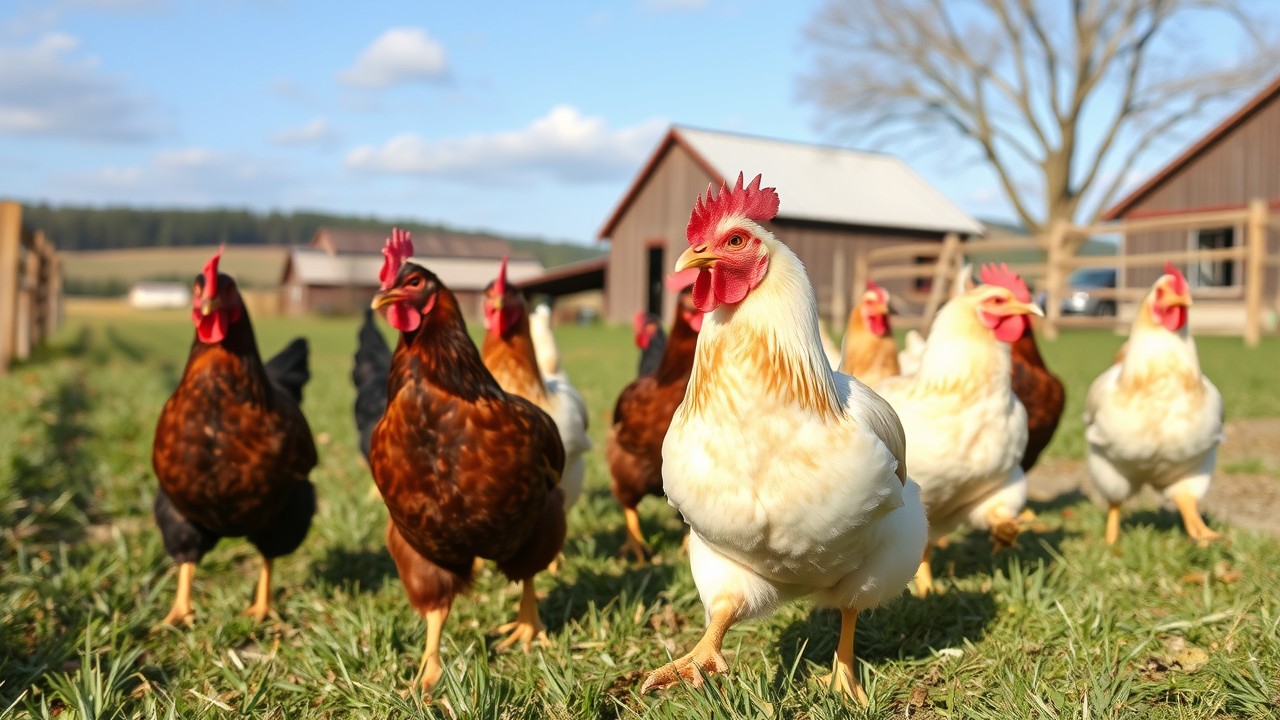Starting a backyard flock is best done in spring and summer. Chicks flourish in warm weather, daylight hours lengthen for foraging, and fresh greens and insects are abundant. These months also allow you to establish routines before colder weather arrives. From chicken coop setup in warm weather to seasonal health strategies, this guide covers everything you need to know about how to raise chickens in summer and beyond.
Starting with Chicks or Pullets: What’s Right for You?
The Joy of Baby Chicks
Beginning with fluffy, day-old chicks will be a springtime favorite for backyard chickens for beginners. They’re adorable and let you bond with your flock from day one. However, chicks require a brooder (a warm, safe enclosure) for 6–8 weeks. Follow the baby chicks' spring guide to master temperature control, feeding strategies, and socialization.
The Convenience of Pullets
Pullets (young hens aged 16–24 weeks) are ideal for backyard chickens for beginners seeking instant results. They’re ready to lay eggs within weeks and skip the fragile chick stage. Pullets adapt quickly to new coops, making them perfect for time-strapped owners.
Coop Setup for Warmer Months
A proper chicken coop setup in warm weather is crucial for your flock's well-being.

Ventilation is Essential
Good ventilation removes excess heat, moisture, and hazardous ammonia gases from droppings. Aim for vents located high up on the coop walls (near the roofline) and potentially ridge or soffit vents. Windows covered securely with predator-proof hardware cloth—1/2-inch or 1/4-inch wire mesh, not flimsy chicken wire—also provide excellent ventilation and are a key part of any good chicken coop setup in warm weather.
Shade Strategies
If possible, locate the coop where it receives morning sunlight but is sheltered during the hottest afternoon hours. North or East-facing windows or doors can also help. Tarps or shade cloth spread over the run provide essential cool zones. Planting vining plants, shrubs, or tall grasses around the run offers natural cooling.
Sufficient Space
Overcrowding is stressful and complicates heat management considerably. As a general rule, a standard-sized bird needs at least 4 square feet of space inside the coop and 8 to 10 square feet of space outdoors in the run. More space is always better, as it lets birds spread out and find cooler areas, which is an important consideration for how to raise chickens in summer.
Dust Bathing Space
A dust bath is important all year round, but especially critical in spring and summer when external parasites like mites and lice flourish. Chickens naturally dust bathe to keep their feathers clean and repel pests. Find a shaded, dry spot in the run and fill the bath with dry soil, sand, or a combination of the two. Providing a good dust bath area is one of the essential spring chicken care tips.
Investing time and effort into your chicken coop setup in warm weather pays off significantly in flock health and contentment.
Feeding & Hydration Tips for Hot Weather
Knowing how to raise chickens in summer successfully relies heavily on providing the correct diet and ample cool water.
Water: The Most Important Summer Nutrient
Chickens drink significantly more water when it's hot—sometimes double their typical amount. Dehydration comes on fast and is quite harmful. For bigger flocks, it is particularly important to provide many water sources. Place waterers in shaded, easily accessible locations both inside the coop (if space permits and doesn't cause excess dampness) and outside in the run.
On hot days, add frozen water bottles or ice blocks to the drinking fountain. Refresh water frequently—at least once daily, and preferably twice or more during heatwaves—as cool water warms up quickly and warm water fosters bacterial growth. During periods of extreme heat stress, consider adding poultry-specific electrolytes to the water; this is one of the key summer chicken health tips.
Changing Feeding Strategies
During the warmest part of the day, chickens may eat slightly less. Feed them primarily in the cooler morning and evening hours. However, ensure they have continuous access to their main layer feed all day, should they choose to eat. Continue offering a high-quality layer feed suitable for their age group to ensure they acquire enough protein and calcium for egg production.
Provide low-energy, hydrating treats in moderation. Good choices include watermelon pieces, cucumber slices, lettuce leaves (not iceberg), berries, melon rinds, and other chilled fruits or vegetables. Avoid giving large amounts of scratch grains or corn during the heat of the day, as digesting these generates more body heat. Understanding these feeding adjustments is vital for raising backyard chickens in spring/summer.
Common Seasonal Challenges and Solutions
Heat Stress
Heat stress is a major worry for backyard hens as temperatures climb. Symptoms such as severe panting, wings held away from the body, and lethargy indicate your flock is struggling to stay cool. Include summer chicken health tips like providing frozen treats to help with this issue. Freezing pieces of watermelon, berries, or peas not only hydrates hens but also helps lower their body temperature as they peck at the treats.
Another effective method is placing shallow pans of cool water in shady areas. As a means of controlling their core body temperature, chickens will often stand in water to refresh their feet. Preventing heat-related illnesses starts with providing plenty of shade and guaranteeing continuous access to cool, clean water – fundamental knowledge for how to raise chickens in summer.
Parasites and Pests
Warm weather speeds up the life cycle of pests such as mites, lice, and flies, which can invade coops and harm your flock. Mites often lurk in coop crevices and feed on hens at night, potentially causing anemia and feather loss, while flies can transmit diseases and create unsanitary conditions.
Fight these intruders using a combination of preventative measures and coop modifications as part of your chicken coop setup in warm weather. Regular coop cleaning—including changing bedding weekly and cleaning surfaces—disrupts insect breeding cycles. Herbs such as lavender, mint, and rosemary may serve as natural repellents when scattered in nesting boxes or hung around the coop. Diligent pest management is one of the most important spring chicken care tips.
Predators
Longer days in summer mean more time for potential free-ranging, but they also coincide with increased predator activity. Raccoons, foxes, hawks, and even neighborhood dogs might pose a threat to your flock, especially at dawn and dusk.
Strengthen potential entry points on windows and vents with hardware cloth, as predators can easily tear through chicken wire. Motion-activated lights around the coop perimeter can deter some nocturnal predators. For ground-dwelling threats like snakes or weasels, ensure there are no openings larger than half an inch, especially near the base of the coop. Protecting your flock requires vigilance and is a critical part of raising backyard chickens in spring/summer.
Proactively tackling these issues with focused summer chicken health tips; this knowledge is particularly useful for those exploring backyard chickens for beginners.
Final Thoughts
Raising backyard chickens in spring/summer is a rewarding hobby that can connect you more closely to your food source and the environment. This guide should provide a solid foundation, especially for backyard chickens for beginners. Prepared to begin your chicken-keeping journey? Tell other enthusiasts about your progress and enjoy the clucks, eggs, and companionship along the way!








